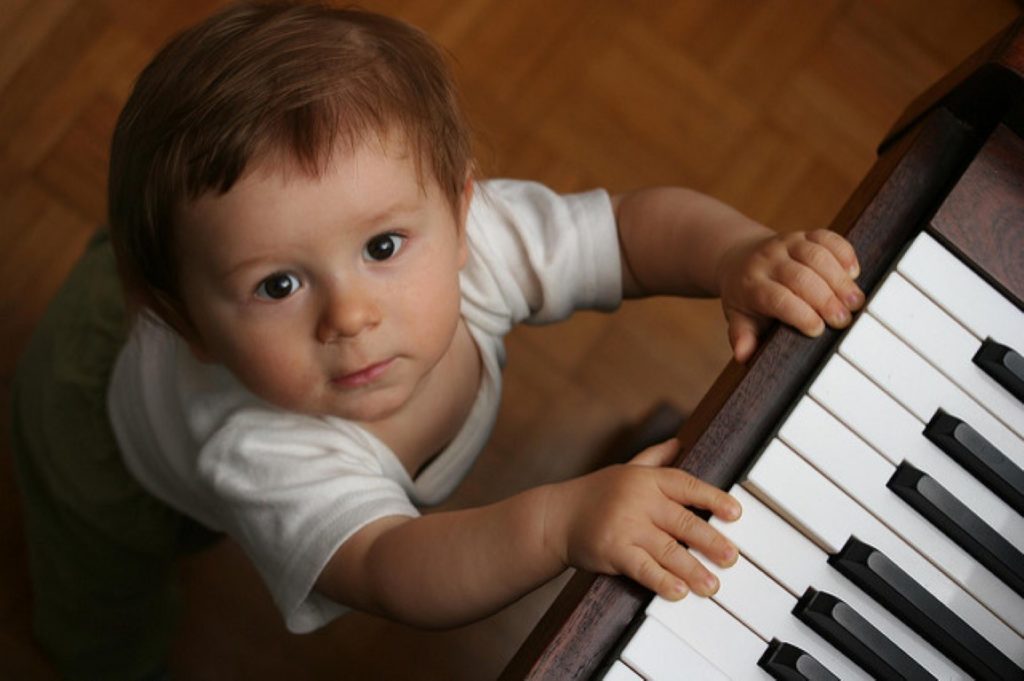Pitch is what helps us mentally identify the lowest note in the Jermaine Dupri song “Sweetheart”, and the highest note in “Emotions”, both made popular by Mariah Carey. Psychoacoustics is the study of the perception of sound. The pitch of a note is a psychoacoustic feature that allows us to order musical notes on a scale and classify them as low or high. Despite extensive studies, the exact science behind how pitch is processed in the human brain is still not known.
Some studies propose that pitch perception progresses with the development of the auditory cortex, the part of the brain that interprets sound. But according to the results of a study by researchers from the University of Washington, babies can perceive pitch better than adults, despite lacking a fully developed auditory cortex.
The auditory system is the part of the human brain that assigns features we associate with sound, like loudness, pitch, and timbre. Timbre is the tonal quality unique to an instrument, which is how we can tell the difference between middle C played by a flute and middle C sung by a human. Musical instruments can render a sound wave composed of a multitude of harmonics (or frequencies) even for a single note in a melody. The fundamental frequency is what gives a note its pitch.
Three groups of participants—three-month old and seven-month old babies, and adults—were tested to see if they could discern a wrong note in the popular 19th century English lullaby, Twinkle, Twinkle, Little Star. The wrong note, dubbed as a change melody, was introduced by filtering out the fundamental frequency from the note. This concept is known as the missing fundamental (hear it for yourself!). The aim of the study was to understand the developmental trajectory of the auditory system.
The auditory system starts developing in the prenatal stage itself, and a number of developments take place in the auditory cortex within the first few months of an infant’s life. However, few tools exist to analyze hearing at this stage.This study measured hearing with a popular method known as the observer based psychoacoustic procedure, which uses a behavioral response to sound.
Infants were seated on a caregiver’s lap inside a soundproof booth. The melody was played into the infant’s ear. To prevent the caregiver’s reaction to the melody influencing the infant, the caregiver wore headphones loudly playing the music of their choice; thus, neither could hear the other’s music. Adult participants sat alone inside the booth.
In a trial, or conditioning phase, the participants were trained to listen for the change melody, which was always followed by the activation of a mechanical toy which was inside the booth with the participant. Thus, through this phase, the participants were conditioned to expect the activation of the toy immediately after the change melody was played. This way, the infant’s attention to the toy would be an indicator that the infant recognized the change melody.
They then moved on to the actual test phase, in which the toy would be activated only when an experimenter seated outside the booth correctly judged whether a change melody was played, by studying the behaviour of the infant (head turns/eye darts toward the toy). Adult participants were asked to raise their hand when they detected a change melody. To up the ante, the participants were tested with the same melody in not one, but three keys. Here, the pitch of the same note changes with the key. Timbre was thrown into the mix, by making the melodies sound as though they were coming from different instruments.
Interestingly, most of the infant participants aced the conditioning phase in their first attempt itself, and were able to identify the change melody in all three keys. They also did not face timbre confusion. In contrast, the adult participants were a rather confused lot; some required additional repetitions of the conditioning phase yet still weren’t able to identify the change melody in the test phase. They also confused the timbre of the melody with its pitch.
Thus, despite having a fully developed auditory cortex, adults aren’t able to perceive pitch variations as effectively as babies. Contrary to popular notions, the auditory cortex may not be as involved in processing pitch, and other pathways may be helping babies integrate information on pitch. Pitch is thus perceived differently in different stages of development, and may aid in the timely diagnosis of impaired pitch perception in infants.


